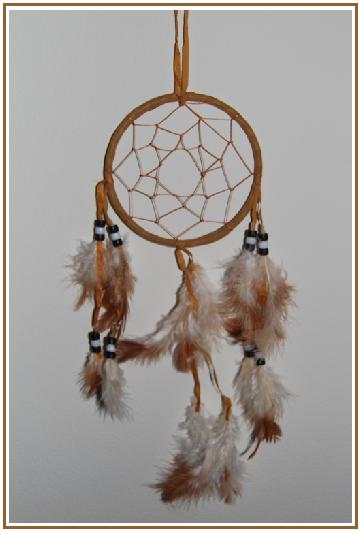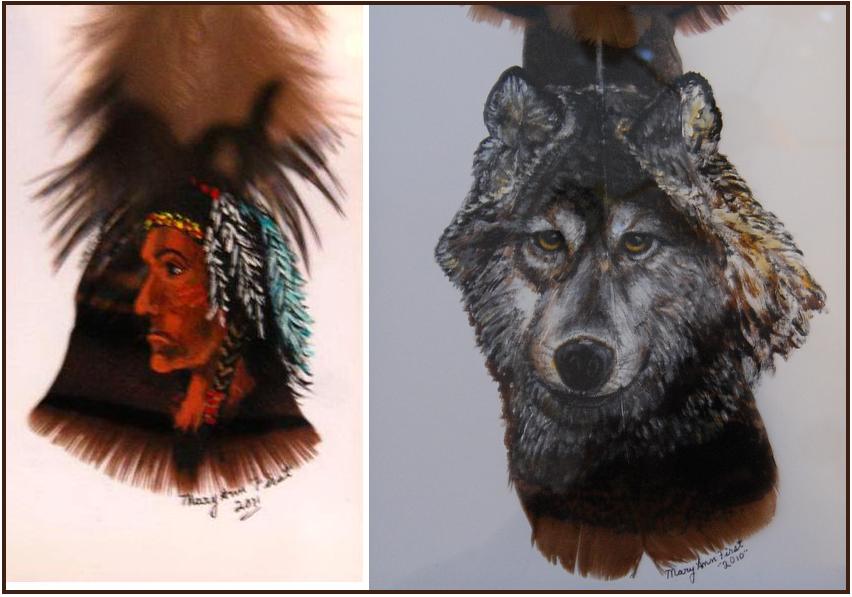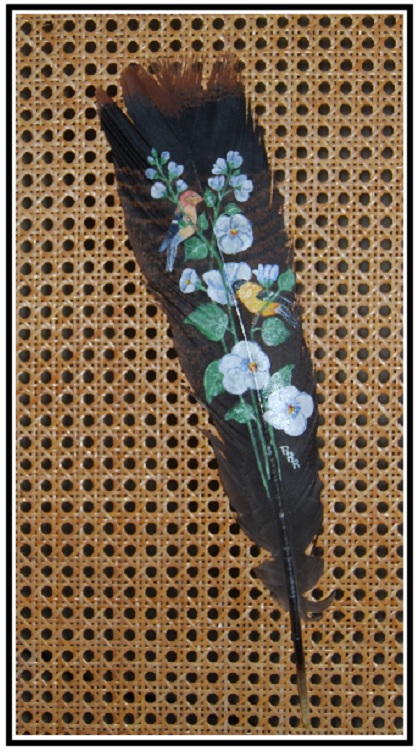(Singular nouns: Fr-plume (d’oiseau); Ger-Feder/Vogelfeder; Nor-fjær; Rus-перо)
Last update 22 June 2016
A.
Feathers.
Scarlet Macaw (Ara
macao (Linnaeus, 1758)) Ceremonial Prayer
Feather Fan, including 12 Macaw
feathers, each about 45 cm long. Fashioned by Patrick Scott.
(© photo
by Wolf, from
http://www.sedonawolf.com/PrayerFeather.htm)
B. Feathers. Amerindian headdress
(length ~ 1.5 m) featuring barred turkey (Meleagris
gallopavo
Linnaeus, 1758) feathers; hand crafted
by Native American Artist Buffy Sam of Laguna (western Pueblo)
affiliation. (© photo by
Peggy Boitier, courtesy www.cowboyandlady.com).

C. Feathers. These are part of a replica of a Dream
Catcher. The following "Legend of the Dreamcatcher" (sic) came
along this one, a gift, which is now hanging on my bedroom wall:
"Native Americans of the Great Plains believe the
air is filled with both good and bad dreams.
"According to legend, the good dreams pass
through the center hole to the sleeping person.
The bad dreams are trapped in the web, where
they perish in the light of dawn.
"Historically, dreamcatchers were hung in the tipi
or lodge and on a baby's cradle board."
Considering the fact that this one , though "Designed in USA," was "Made in China" I wonder if, for example, the associated belief has been assumed by any people in Asia.

D. Feathers. These two paintings on feathers were by
Mary Ann First of Brevort, Michigan (width of the tips of the
feathers of these two paintings ~ 5 - 7 cm.) The feathers are from wild
turkeys -- the one one the left, a breast feather; the one on the
right, a tail feather. Mrs. First uses
acrylic, and as exemplified by the one on the right, sometimes extends
the painted subject on to the surrounding material to which the feather
is attached. One particularly interesting painting of her
paintings on feathers was mounted on birch bark.

E. Feather. The painting(s) on
this wild turkey feather was by Robert Reid of Grayling, Michigan
(length of feather ~40 cm.). .
"Native Americans of the Great Plains believe the
air is filled with both good and bad dreams.
"According to legend, the good dreams pass
through the center hole to the sleeping person.
The bad dreams are trapped in the web, where
they perish in the light of dawn.
"Historically, dreamcatchers were hung in the tipi
or lodge and on a baby's cradle board."
Considering the fact that this one , though "Designed in USA," was "Made in China" I wonder if, for example, the associated belief has been assumed by any people in Asia.
